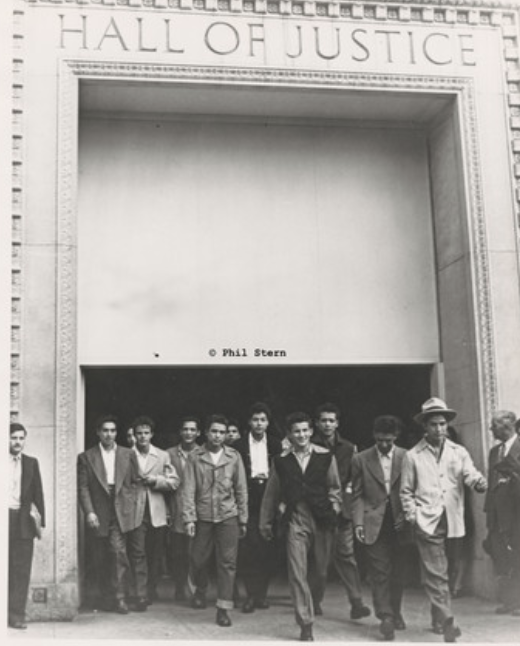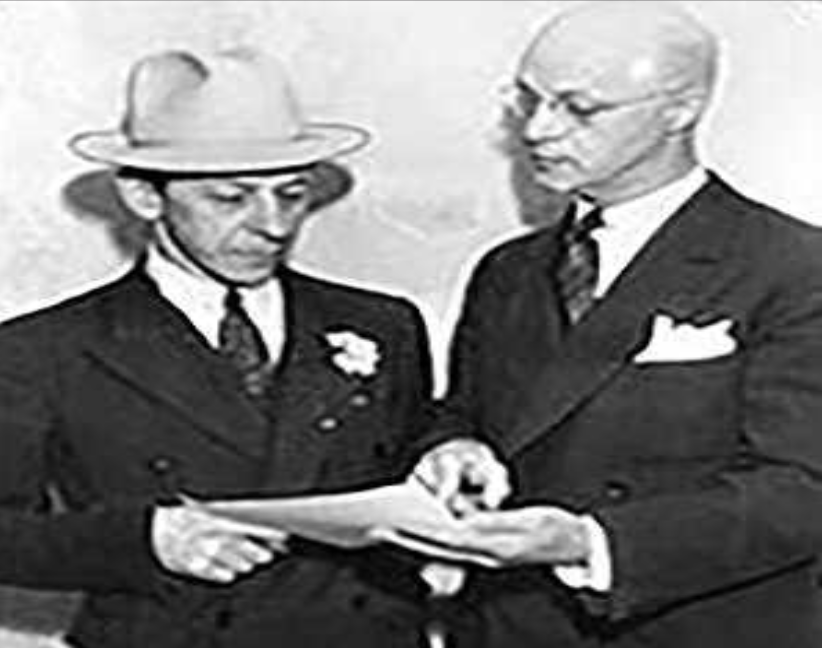After the 38th Street boys were convicted of the murder of Jose Diaz, the Sleepy Lagoon Defense Committee (SLDC) made plans to fund an appeal. In order for the SLDC to fund an appeal, they needed to sway the public's opinions of the 38th Street boys. Carey McWilliams and Alice Greenfield were two loud voices defending the 38th street boys. McWilliams delivered speeches in which he claimed the 38th Street boys were wrongfully imprisoned and that justice had not been served to Los Angeles' Mexican-American communities. Greenfield, as well as delivering speeches, maintained the SLDC newsletter. All of the SLDC's hard work paid off, because on October 23, 1944, two years later, the 38th Street boys were finally released.
The 38th street boys, dressed in illegal zoot suits in an act of rebellion, triumphantly leave court after their release in 1944.
|
Judge Charles William Fricke (left) oversaw the trial for the 38th street boys. He was extremely biased and did not give the 38th street boys a fair trial.
|
Alice Greenfield, the executive secretary for the Sleepy Lagoon Defense Committee. While secretary she published the SLDC newsletter and raised money to support the Sleepy Lagoon Defense Committee. She passed away in 2009 at age 92. |
The Sleepy Lagoon Defense Committee worked tirelessly to get the 38th Street Boys released. They launched fundraisers in order to hire Ben Margolis, a notable lawyer, to file an appeal. Ben Margolis wrote an approximately 600-page brief stating that, “The Sleepy Lagoon trial has been such a legal disaster that the court had no choice but to overturn the seventeen convictions and release all twelve of the young men who remained incarcerated.” The SLDC claimed that Judge Charles William Fricke had been deeply biased, creating an unfair trial environment. Secondly, they argued that the convictions of the 38th Street Boys showed "that the U.S. war effort, which depended on unity of purpose, was being actively undermined by Nazi agents and Fascist sympathizers operating in America." The SLDC also said that the racist views of` white officials and newspapers toward Mexican-Americans were placing America in peril. These claims lead to the 38th Street boys being released from San Quentin Prison on October 23rd, 1944. A Los Angeles Times article stated, “The atmosphere was electric with excitement as the liberated men were besieged by well-wishers who enthusiastically pumped their hands and slapped their backs. Tears flowed unashamedly.”
|




